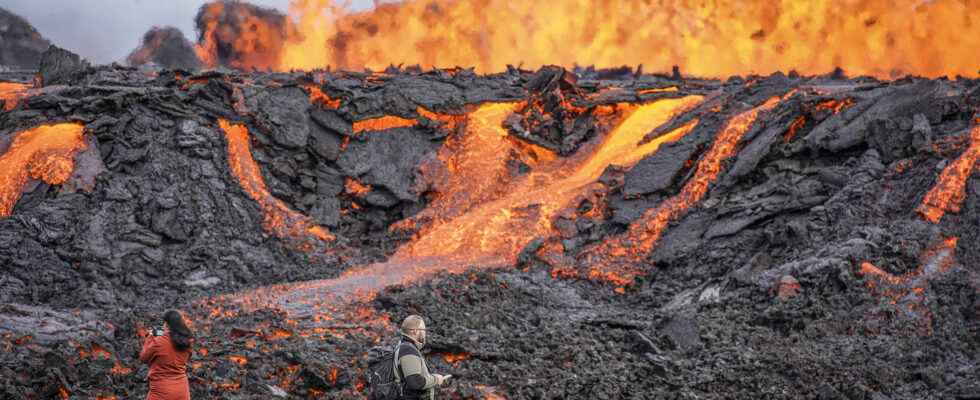Onlookers flocked Thursday to the site of a new eruption in a volcanic fissure located in an uninhabited valley about 40 km from Reykjavik, the capital of Iceland. The eruption, which began on Wednesday, is located nearly a kilometer from the Mount Fagradalsfjall volcano in southwest Iceland, which had been erupting for six months last year.
The site of the eruption, in a difficult to access area that requires a 90-minute walk, has already attracted more than 1,830 visitors on the first day of the appearance of the fissure, according to Icelandic authorities. And curious people were walking towards the site early Thursday morning.
The authorities had called on Wednesday the population not to go to the site before a risk assessment is carried out. But on Thursday, civil protection said only young children should stay out of the area of the eruption. The gases emanating from volcanic eruptions, especially sulfur dioxide, can be dangerous or even fatal.
A strong tourist attraction
Last year, the site of the eruption, easily accessible on foot, had attracted more than 435,000 tourists. The Meteorological Institute of Iceland estimated the length of the fissure at 360 meters on Thursday, with lava jets reaching around 10 to 15 meters. The flow of lava in the early hours of the eruption was estimated at 32 cubic meters per second, according to measurements made Wednesday by scientists from the Institute of Earth Sciences, three and a half hours after the start of the eruption. eruption.
This is about four or five times more than at the start of the 2021 eruption. “The current eruption is therefore much more powerful,” the Institute said on Facebook. According to the Institute of Earth Sciences, lava from the new eruption covered an area of about 74,000 square meters.
Iceland has 32 volcanic systems currently considered active, the most in Europe. The country, which experiences an eruption every five years on average, straddles the Mid-Atlantic Ridge, a fissure separating the Eurasian and North American tectonic plate. The movement of these plates is partly responsible for the country’s intense seismic activity.
See also, in video:
